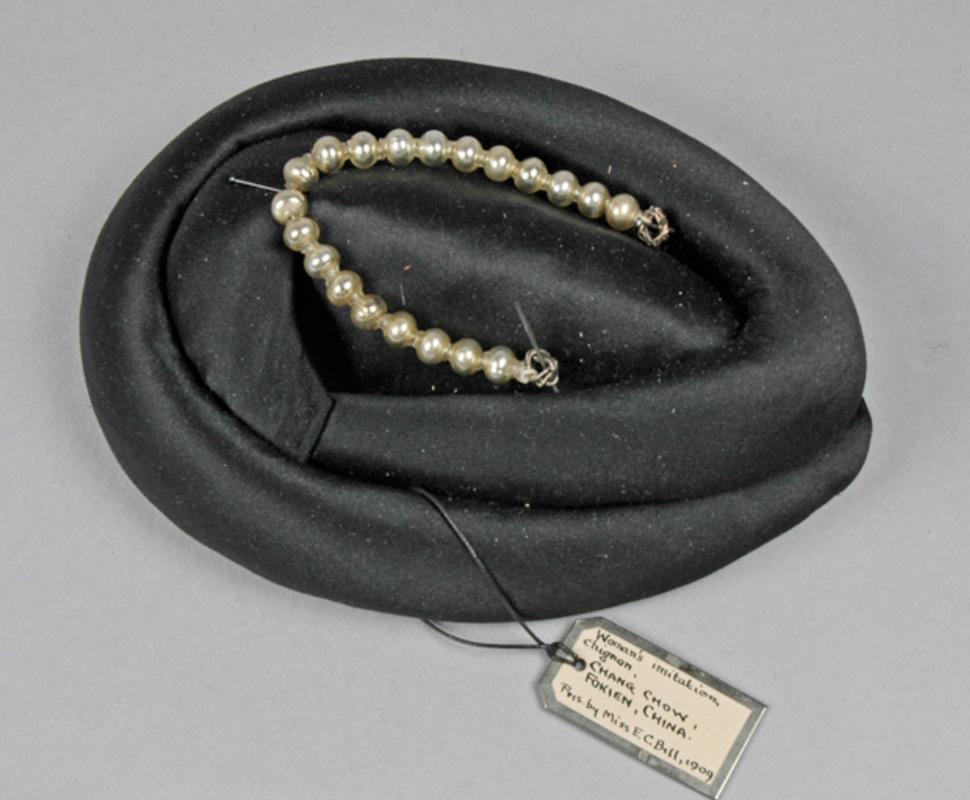Silk bun
China, 19th century
 Collected and donated by Miss E. C. Bell in 1909; 1909.32.24Cantonese women were expected to have long, luxurious hair as an indication of their good health and fertility. Usually the hair was worn in a tightly-bound bun at the back of the head, ornamented and secured with gold or silver pins which constituted an essential part of a married woman's dowry. This artificial bun may have been worn by someone whose natural hair was not long enough to style into a bun, or to accentuate an existing style. Traditionally women did not expose the length of their hair in public except at funerals when it was let down and rubbed over the coffin as an expression of grief.
Collected and donated by Miss E. C. Bell in 1909; 1909.32.24Cantonese women were expected to have long, luxurious hair as an indication of their good health and fertility. Usually the hair was worn in a tightly-bound bun at the back of the head, ornamented and secured with gold or silver pins which constituted an essential part of a married woman's dowry. This artificial bun may have been worn by someone whose natural hair was not long enough to style into a bun, or to accentuate an existing style. Traditionally women did not expose the length of their hair in public except at funerals when it was let down and rubbed over the coffin as an expression of grief.
Men in China have also been subjected to culturally determined regulations concerning their hair. In the 17th century the Manchu conquered China and forced men to shave their foreheads and plait their long hair in the Manchurian style. Local rulers sent armed barbers in search of people who had dared keep their frontal hair. If they refused to cut their hair, they would be executed on the spot, giving gruesome truth to the slogan, "Keep your head, lose your hair; keep your hair, lose your head". In the early 20th century the Manchu were overthrown and the new Chinese government passed a new law requiring men to cut off their plaits.
